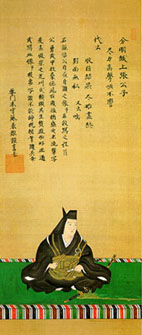|
Philosophy and Practices of the Samurai
The Bushido:
This is the study
of the values of the Samurai and is also known otherwise as The Way of the Bow
and Arrow. It has a predecessor code known as The Way of Horse and Bow and like
Bushido it was a code of chivalry. Bushido is found in death and at first sight
it looks suicidal but it actually meant the need to transcend the fear of death
so as to serve the lord faithfully. Under the Tokugawa Period, the role and the
code of Bushido undergone a change. Yamaga Soko was influenced by Confucianism
and believed the samurai to be a role model for society and acquires virtues
that is beneficial to the society. As this was a peaceful period in history,
there was a need to divert the energies of the Samurai to more peaceful
accomplishments like the tea ceremony. The spiritual training believed in
transforming the satsujin no ken- the sword that kills to the katsujin no ken-
the sword that gives life.This had led critics like Ogyu Sorai to believe that
the Bushido is a deviation from the true warrior codes and the true codes were
to be found in the Gempei Wars instead.
 Influence
of Zen: Influence
of Zen:
As the alternative
to failure in a battle is death,
warriors were
highly interested in improving their
odds. This led to
the rise of Zen in the Samurai
class that taught
that the mental state of the
warrior could
strengthen the mind and body of
the warrior. As it
stresses direct experience and the Zen masters displayed a form of
self-reliance
and courage, it greatly appealed to the warriors. Shikin Zen uses koans
(shocking
paradoxical
statements) extracted from the daily lives of the Samurai to ensure easy
understanding.
According to Mumemoriís Heihokadensho- Family Methods of Strategy, a state
of mu-shin,
no mind that meant leaving all thoughts and feelings behind and using the sword
in
a natural way
is the only recipe for success.
Death
Before Dishonour:
This philosophy is
found in the practice of the hara-kiri or seppuku,
which is the cutting of the
belly. This is done to prevent the shame of
capture, as an act of kanshi,
showing remonstration to a superior;
or a death sentence and was chosen because
it could only be performed
by a courageous man thereby distinguishing him as a
member of the
military elite and also because the Japanese believed the stomach
to be the
physical and spiritual center of the body. Another man, a kaishakunin
would also be present to behead the performer as the act was completed
or when
courage seemed to falter. He had to be a skilled swordsman to
leave the head
attached to the body so as not to be mistaken for an ordinary execution.

|